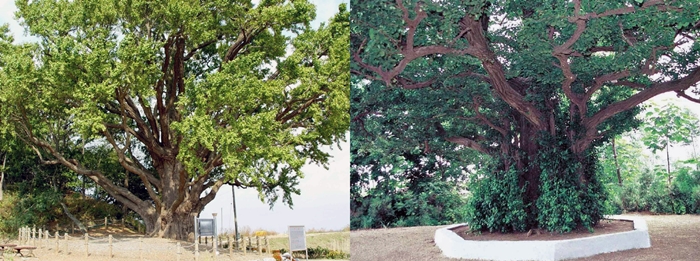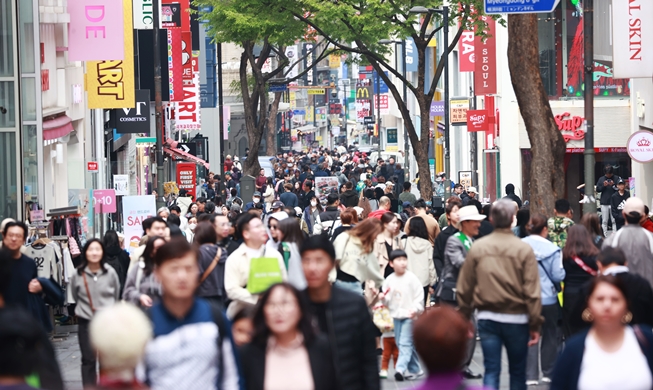-
 Korea.net's 24-hour YouTube channel
Korea.net's 24-hour YouTube channel- NEWS FOCUS
- ABOUT KOREA
- EVENTS
- RESOURCES
- GOVERNMENT
- ABOUT US

South Korea's Natural Monument No. 304, the Ganghwado ginkgo tree (left), and Natural Monument No. 165 in North Korea, the Yeonan ginkgo tree (right), both stand tall today. (Cultural Heritage Administration)
By Kang Gahui and Kim Min-Jeung
With the inter-Korean family reunions coming up, an event to sooth the pain of two ginkgo trees that have been separated for 800 years took place on Aug. 17.
There is a special story behind this “married tree couple.”
There were two ginkgo trees, one male and one female, in North Korea’s Hwanghae-do Province, in Yeonan-gun County in the town of Honam-ri. One year when it was flooded, the male tree became uprooted and flowed down all the way down to South Korean territory at the mouth of the river on Ganghwado Island. The residents rescued the tree and replanted it. People from both counties then contacted each other to perform ancestral rites at on Seollal (Lunar New Year)'s Eve, but the rituals ceased after the division of North and South Korea.
With recent signs of thawing in the inter-Korean relationship, the South's Cultural Heritage Administration (CHA) has decided to resume the annual rituals, which have been halted for over 60 years.
The rituals, co-hosted by both the CHA and Ganghwado-gun County, were held in front of the male ginkgo tree on Ganghwado Island in the town of Seodo-myun. It was performed on July 7, the date known to be associated with the traditional tale of Jiknyeo and Gyeonu, two lovers who reunite on this day every year. The ritual involved a restoration ceremony, the recital of a poem for peace, and a traditional Korean outdoor performance called a "reign of peace."
The CHA stated that by soothing the pain of the “ginkgo tree couple,” it hopes to restore the ritual between North and South Korean residents, praying for peace and stability of the village and across the peninsula as a whole. The administration also announced that it will “find ways to perform the ritual on the same day but in different locations through inter-Korean cooperation.”
kgh89@korea.kr
Most popular
- First hearing-impaired K-pop act hopes for 'barrier-free world'
- 'Mad Max' director impressed by 'cinema-literate' Korean viewers
- Romanian presidential couple visits national cemetery
- 'Korean mythology is just as wonderful as Greek and Roman'
- Hit drama 'Beef' wins awards from 3 major Hollywood guilds













